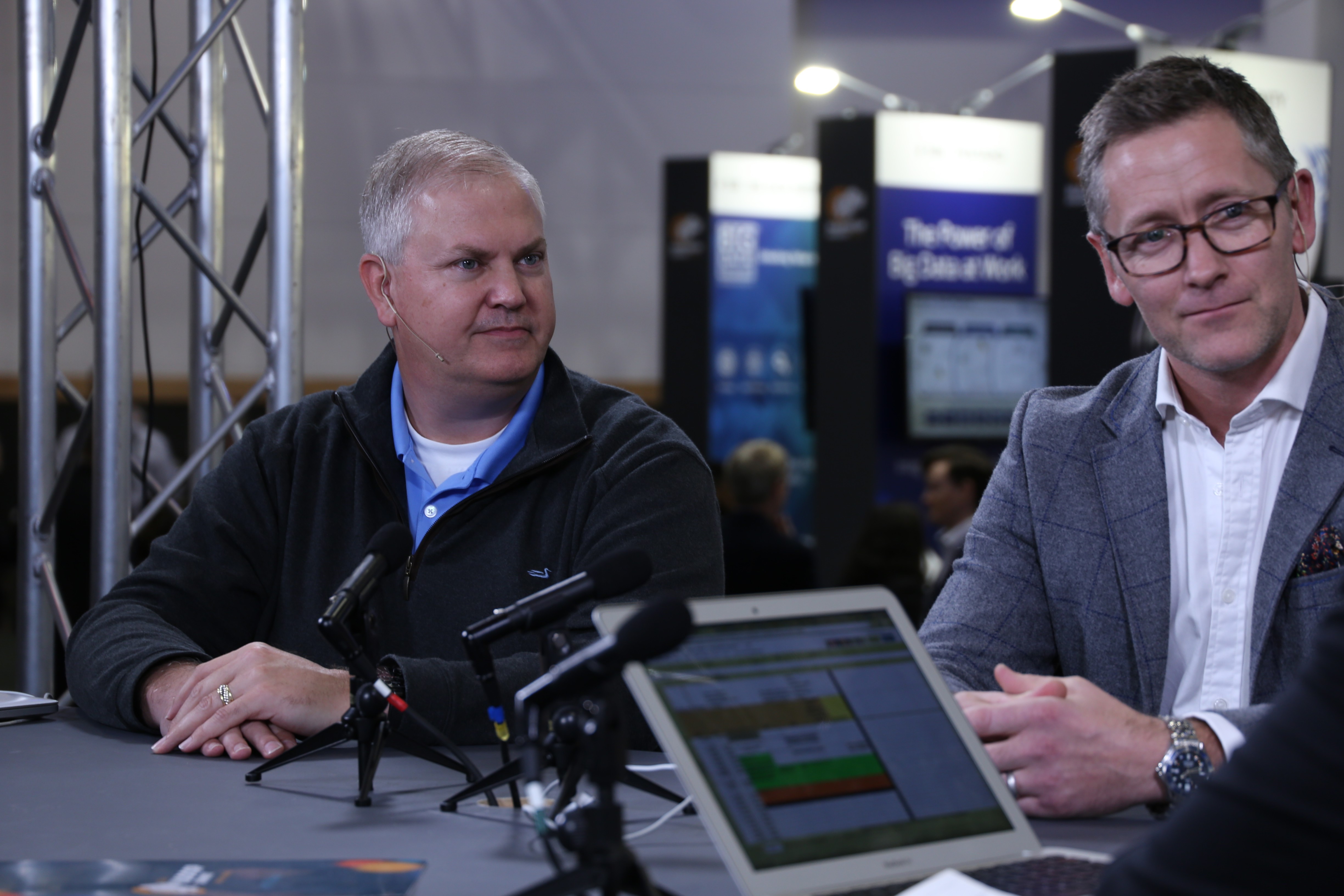 NEWS
NEWS
 NEWS
NEWS
 NEWS
NEWS
While Hadoop has been making its way into more venues of utilization, some representatives at this year’s Hadoop Summit in Dublin, Ireland, have been finding new paths forward by going back to examine what gave Hadoop trouble at the start of its implementation.
Carey James, business development manager of Big Data solutions at EMC, and Mark Mason, director of business development, EMEA, for Hortonworks,Inc., joined Dave Vellante (@dvellante), cohost of theCUBE, from the SiliconANGLE Media team, to talk about applying and receiving improvements with Hadoop.
Mason was enthusiastic about the turnout for the HS16 event, commenting, “We’re incredibly pleased just to see the growth and the attendees in the audience, I think the mix is fantastic. … The evolving and growing partner community and the ecosystem we have together, they’re all here; it’s great seeing so many people, so many faces.”
James was equally enthusiastic about the growth and increasing usage of Hadoop, particularly in consideration of its relatively humble beginnings. “At first, it was really just around storage mechanisms and how to drive those pieces, but as we’ve progressed over the last three to four years, in this journey. For us, as well, it’s progressed beyond that … to actually now come into providing enterprise into the data-management pieces.”
Despite the significant growth of Hadoop, James felt that refining the implementation was a key part of helping it continue to improve. “Getting the data in and storing it is one piece, but making it useful to the data scientist, where it’s in a governed and curated fashion … that’s not just a large pool of information, that you’re trying to muddle through the swamp, but bring that piece in there, as well as also bringing adult supervision to the ecosystem, to the compute side of the house as well.”
James also felt that the tendency toward “cluster sprawl” had initially hampered Hadoop adoption, but that the processes of organization were improving to reduce that downside.
Moving on to business partnerships, James laid out the marketing structure: “The Hadoop distribution vendors have grown out pieces, and we’ve now been able to leverage those partnerships where we can now complement, versus having to kind of compete in those arenas.” Contingently, the conversation with customers has moved away from needing the value explained and more toward how that value can be reached while bypassing technical hurdles.
As Mason commented, “One of the key things we’re seeing is that every single business is a data business. And the businesses that are going to do well are the organizations that embrace this and understand that using this data to drive themselves forward, create competitive advantage; they’re the ones that are really going to start seeing the value early.”
With the shift of housing large amounts of data turning from liability to asset, Mason said, “There’s also an interesting shift … in the types of data that are available to an organization, and people have relied for the longest time on the more traditional data types in order to build a vision of what they’re doing as a business [and] the customers they’re serving. But now we have the opportunity to get data from multiple edge devices … we have data at rest, with Hadoop, but we also manage data in motion, with the Hortonworks DataFlow. So we’re bringing all data under management … we can now enrich data in one place with multiple other datasets to try and transition the sort of things that we’re looking at, build new insights … and it’s radically shifting.”
Watch the full interview below, and be sure to check out more of SiliconANGLE and theCUBE’s coverage of Hadoop Summit 2016 – Dublin. And make sure to join in during theCUBE’s live coverage during the event by joining in on CrowdChat.
Support our mission to keep content open and free by engaging with theCUBE community. Join theCUBE’s Alumni Trust Network, where technology leaders connect, share intelligence and create opportunities.
Founded by tech visionaries John Furrier and Dave Vellante, SiliconANGLE Media has built a dynamic ecosystem of industry-leading digital media brands that reach 15+ million elite tech professionals. Our new proprietary theCUBE AI Video Cloud is breaking ground in audience interaction, leveraging theCUBEai.com neural network to help technology companies make data-driven decisions and stay at the forefront of industry conversations.